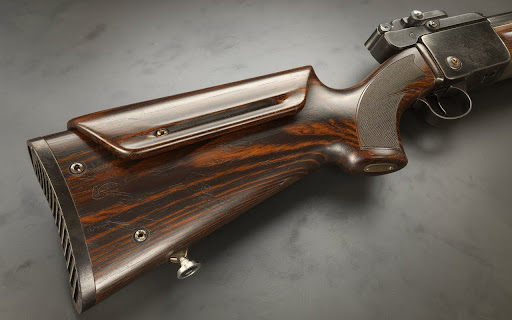Enhancing Your Savage 110: The Best Stock Upgrades for Performance and Comfort

The Savage 110 rifle is renowned for its accuracy, reliability, and versatility. Whether used for hunting, target shooting, or tactical applications, the Savage 110 stock is a dependable choice for many shooters. However, even the most well-regarded rifle can benefit from a stock upgrade. The right stock can enhance the rifle’s performance, improve comfort, and even elevate its aesthetic appeal. This comprehensive guide will explore various stock options for the Savage 110, providing you with the information needed to choose and install the perfect stock for your needs.
Understanding the Role of the Stock
The stock of a rifle is more than just a component—it’s an integral part of the shooting experience. Here’s how the stock influences your Savage 110:
- Support and Stability: The stock supports the rifle’s action and barrel, which impacts stability and accuracy. A well-designed stock can improve your shooting precision and consistency.
- Ergonomics: The stock affects how comfortably you handle the rifle. Key ergonomic factors include grip, length of pull, and cheek weld, all of which affect your shooting posture and comfort.
- Aesthetics: Beyond functionality, the stock contributes to the rifle’s overall appearance. Customising the stock allows you to personalise your rifle to match your style and preferences.
Types of Stocks for the Savage 110
- Factory Stocks
Pros:
- Cost-Effective: Factory stocks are often included with the rifle, making them a cost-effective option for many shooters.
- Compatibility: Designed specifically for the Savage 110, ensuring proper fit and function.
- Traditional Appearance: Maintains the rifle’s standard look, which may appeal to those who prefer a classic style.
Cons:
- Limited Customization: Factory stocks typically offer fewer options for modification and personalization.
- Basic Materials: Generally made from standard wood or synthetic materials, which may not provide the best durability or lightweight characteristics.
Factory stocks are ideal for users who are satisfied with the default setup or are new to rifle customization.
- Wooden Stocks
Pros:
- Classic Aesthetic: Offers a traditional and elegant appearance that many shooters find appealing.
- Comfort: Often provides a comfortable grip and balanced feel.
Cons:
- Weight: Wooden stocks are usually heavier, which can impact handling and comfort, especially during extended use.
- Maintenance: Requires regular care to prevent damage from moisture and wear.
Wooden stocks are perfect for those who appreciate a classic look and are willing to perform the necessary maintenance.
- Synthetic Stocks
Pros:
- Durability: Resistant to environmental factors such as moisture, temperature extremes, and impacts. Ideal for rugged conditions.
- Lightweight: Typically lighter than wooden stocks, enhancing handling and reducing shooter fatigue.
Cons:
- Aesthetic Limitations: May lack the traditional charm of wooden stocks.
- Comfort: Some users find synthetic stocks less comfortable compared to wood.
Synthetic stocks are ideal for those needing a robust and lightweight option for various shooting conditions.
- Adjustable Stocks
Pros:
- Customizability: Allows for adjustments in length of pull, cheek height, and other factors to fit individual preferences.
- Versatility: Suitable for different shooting positions and applications, including tactical and precision shooting.
Cons:
- Cost: Generally more expensive than fixed stocks.
- Complexity: Can add complexity to the rifle, which might not be desirable for all users.
Adjustable stocks are great for shooters who want to tailor their rifle to specific needs or for those involved in tactical or precision shooting.
- Target Stocks
Pros:
- Precision: Designed with accuracy in mind, often featuring heavier materials and ergonomic designs that enhance stability.
- Stability: Includes enhancements such as adjustable bipod mounts and heavier weight for improved shooting performance.
Cons:
- Weight: Usually heavier, which can affect portability and handling.
- Cost: High-quality target stocks can be quite pricey.
Target stocks are best for competitive shooters or those requiring maximum accuracy and stability.
- Tactical Stocks
Pros:
- Functionality: Equipped with features like pistol grips, picatinny rails, and adjustable components for modern shooting needs.
- Customization: Allows for the attachment of various accessories such as lights, lasers, and optics.
Cons:
- Appearance: May not appeal to those who prefer a traditional look.
- Cost and Complexity: Can be expensive and may require additional accessories or modifications.
Tactical stocks are designed for versatility and adaptability, making them ideal for tactical and modern shooting scenarios.
Factors to Consider When Choosing a Stock
- Purpose and Use
Determine how you’ll be using your Savage 110. The type of stock you choose should align with your shooting needs. For hunting, you might prefer a lightweight or traditional stock. For tactical or precision shooting, a stock with adjustable features or enhanced stability might be more suitable.
- Comfort and Fit
Ensure the stock provides a comfortable fit and allows for proper shooting form. Key factors include the length of pull (the distance from the trigger to the end of the stock) and cheek weld (the positioning of your cheek against the stock). These factors influence your shooting posture and overall comfort.
- Material and Durability
Consider the environmental conditions where you’ll be using the rifle. Synthetic stocks are better suited for harsh conditions, while wooden stocks offer classic aesthetics and comfort. Choose a material that fits your needs and shooting environment.
- Budget
Stocks come in a range of prices, from budget-friendly factory options to high-end adjustable or target stocks. Determine your budget and find a stock that offers the best value for your money while meeting your functional and aesthetic preferences.
- Aesthetics
While functionality is crucial, many shooters also want a stock that complements their style. Choose a stock that suits your personal preferences and enhances the overall look of your rifle.
Installing and Upgrading Your Stock
- Tools Required
Basic tools such as screwdrivers, allen wrenches, or a torque wrench may be needed for stock changes. Ensure you have the necessary tools before starting the installation process.
- Installation
Follow the manufacturer’s instructions carefully when installing the new stock. The general process involves removing the old stock, placing the rifle’s action into the new stock, and securing it with screws. Be sure to follow any specific instructions provided by the stock manufacturer.
- Fit and Function Check
After installing the new stock, check that the rifle functions correctly. Verify proper alignment of the barrel, ensure the magazine fits securely, and assess overall comfort. Make any necessary adjustments to ensure optimal performance.
- Fine-Tuning
Some stocks, especially adjustable ones, may require fine-tuning to achieve the best fit and performance. Adjust components such as length of pull and cheek height as needed to ensure the most comfortable and effective shooting experience.
Conclusion
Upgrading or customizing the stock of your Savage 110 can significantly enhance your shooting experience. Whether you opt for a traditional wooden stock, a rugged synthetic option, or a high-tech tactical stock, there’s a choice to suit every need and preference. By understanding the various types of stocks and considering factors like purpose, comfort, and budget, you can make an informed decision that will improve both the performance and enjoyment of your Savage 110 rifle. A well-chosen stock not only boosts the rifle’s capabilities but also ensures a more tailored and satisfying shooting experience.


